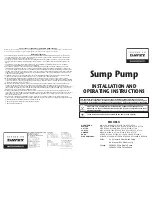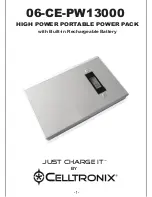
12
| English
2
6
0
9
007 1
26
| (1
2
.4.13)
Bosch Power Tools
Work area safety
Keep work area clean and well lit.
Cluttered or dark areas
invite accidents.
Do not operate power tools in explosive atmospheres,
such as in the presence of flammable liquids, gases or
dust.
Power tools create sparks which
m
ay ignite the dust
or fu
m
es.
Keep children and bystanders away while operating a
power tool.
Distractions can cause you to lose control.
Electrical safety
Power tool plugs must match the outlet. Never modify
the plug in any way. Do not use any adapter plugs with
earthed (grounded) power tools.
Un
m
odified plugs and
m
atching outlets will reduce risk of electric shock.
Avoid body contact with earthed or grounded surfaces,
such as pipes, radiators, ranges and refrigerators.
There is an increased risk of electric shock if your body is
earthed or grounded.
Do not expose power tools to rain or wet conditions.
Water entering a power tool will increase the risk of electric
shock.
Do not abuse the cord. Never use the cord for carrying,
pulling or unplugging the power tool. Keep cord away
from heat, oil, sharp edges and moving parts.
Da
m
aged
or entangled cords increase the risk of electric shock.
When operating a power tool outdoors, use an exten-
sion cord suitable for outdoor use.
Use of a cord suitable
for outdoor use reduces the risk of electric shock.
If operating a power tool in a damp location is unavoid-
able, use a residual current device (RCD) protected
supply.
Use of an RCD reduces the risk of electric shock.
Personal safety
Stay alert, watch what you are doing and use common
sense when operating a power tool. Do not use a power
tool while you are tired or under the influence of drugs,
alcohol or medication.
A
m
o
m
ent of inattention while op-
erating power tools
m
ay result in serious personal injury.
Use personal protective equipment. Always wear eye
protection.
Protective equip
m
ent such as dust
m
ask,
non-skid safety shoes, hard hat, or hearing protection used
for appropriate conditions will reduce personal injuries.
Prevent unintentional starting. Ensure the switch is in
the off-position before connecting to power source
and/or battery pack, picking up or carrying the tool.
Car-
rying power tools with your finger on the switch or energis-
ing power tools that have the switch on invites accidents.
Remove any adjusting key or wrench before turning
the power tool on.
A wrench or a key left attached to a ro-
tating part of the power tool
m
ay result in personal injury.
Do not overreach. Keep proper footing and balance at
all times.
This enables better control of the power tool in
unexpected situations.
Dress properly. Do not wear loose clothing or jewel-
lery. Keep your hair, clothing and gloves away from
moving parts.
Loose clothes, jewellery or long hair can be
caught in
m
oving parts.
If devices are provided for the connection of dust ex-
traction and collection facilities, ensure these are con-
nected and properly used.
Use of dust collection can re-
duce dust-related hazards.
Power tool use and care
Do not force the power tool. Use the correct power tool
for your application.
The correct power tool will do the
job better and safer at the rate for which it was designed.
Do not use the power tool if the switch does not turn it
on and off.
Any power tool that cannot be controlled with
the switch is dangerous and
m
ust be repaired.
Disconnect the plug from the power source and/or the
battery pack from the power tool before making any
adjustments, changing accessories, or storing power
tools.
S
uch preventive safety
m
easures reduce the risk of
starting the power tool accidentally.
Store idle power tools out of the reach of children and
do not allow persons unfamiliar with the power tool or
these instructions to operate the power tool.
Power
tools are dangerous in the hands of untrained users.
Maintain power tools. Check for misalignment or bind-
ing of moving parts, breakage of parts and any other
condition that may affect the power tool’s operation. If
damaged, have the power tool repaired before use.
Many
accidents are caused by poorly
m
aintained power tools.
Keep cutting tools sharp and clean.
Properly
m
aintained
cutting tools with sharp cutting edges are less likely to bind
and are easier to control.
Use the power tool, accessories and tool bits etc. in ac-
cordance with these instructions, taking into account
the working conditions and the work to be performed.
Use of the power tool for operations different fro
m
those
intended could result in a hazardous situation.
Service
Have your power tool serviced by a qualified repair per-
son using only identical replacement parts.
This will en-
sure that the safety of the power tool is
m
aintained.
Safety Warnings for Multi-function Tools
Hold power tool by insulated gripping surfaces, when
performing an operation where the cutting accessory
may contact hidden wiring or its own cord.
Cutting ac-
cessory contacting a “live” wire
m
ay
m
ake exposed
m
etal
parts of the power tool “live” and could give the operator an
electric shock.
Use the machine only for dry sanding.
Penetration of wa-
ter into the
m
achine increases the risk of an electric shock.
Caution, fire hazard! Avoid overheating the object be-
ing sanded as well as the sander. Always empty the
dust collector before taking breaks.
In unfavourable
conditions, e.g., when sparks e
m
it fro
m
sanding
m
etals,
sanding debris in the dust bag,
m
icro filter or paper sack
(or in the filter sack or filter of the vacuu
m
cleaner) can
self-ignite. Particularly when
m
ixed with re
m
ainders of var-
nish, polyurethane or other che
m
ical
m
aterials and when
the sanding debris is hot after long periods of working.
OBJ_BUCH-345-009.book Page 12 Friday, April 12, 2013 11:38 AM













































